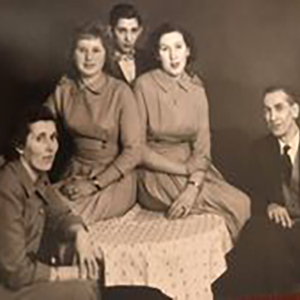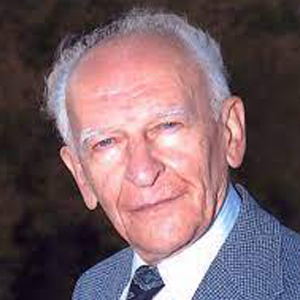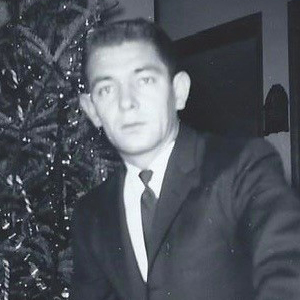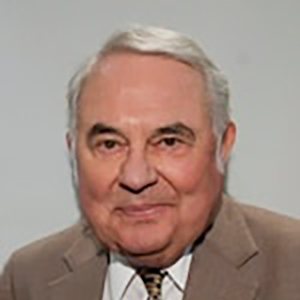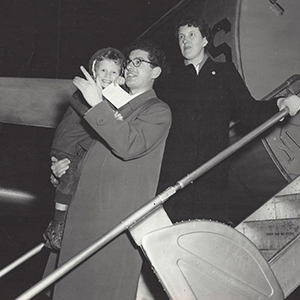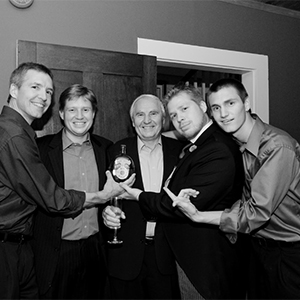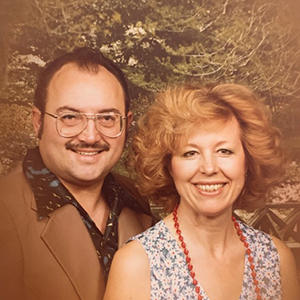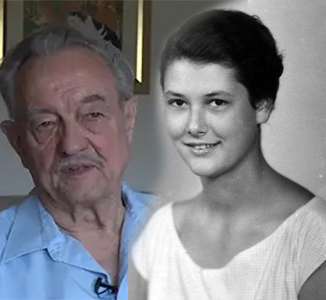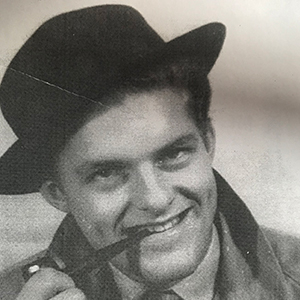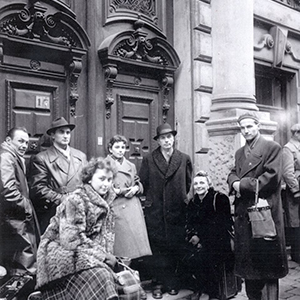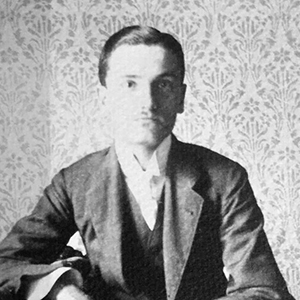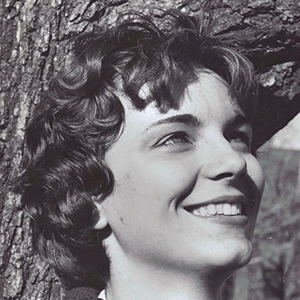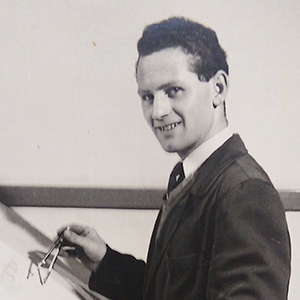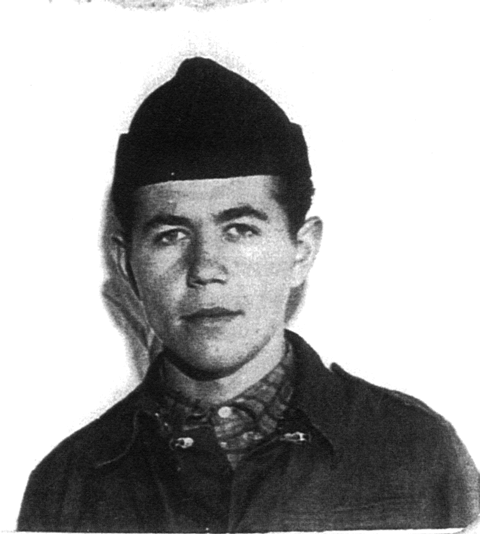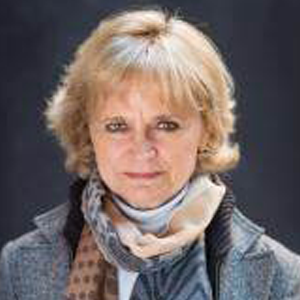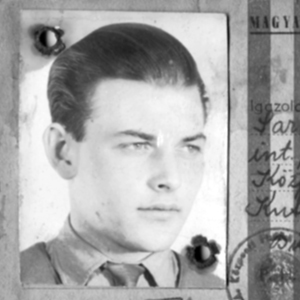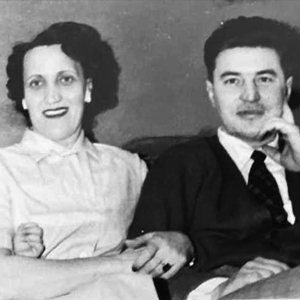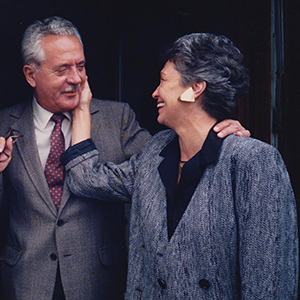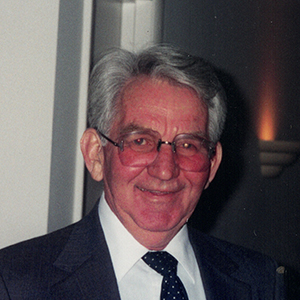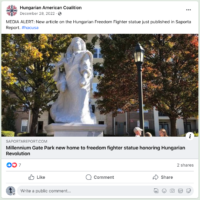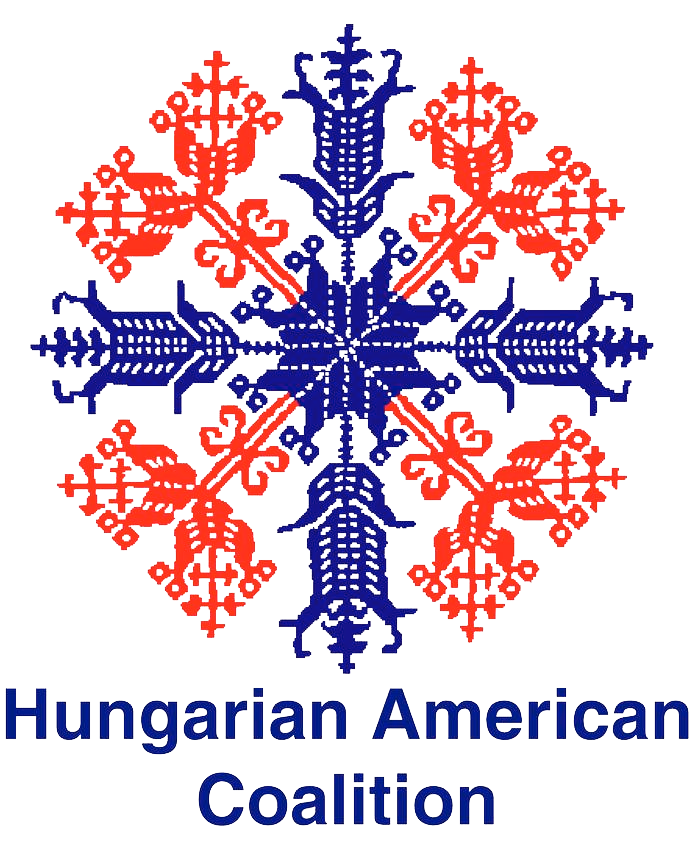Freedom Fighter Stories
Scroll through the names, listed alphabetically, and learn about the people that participated in the revolution. Some give detailed insights into their experience and help us all understand the impact of communism. Many fled Hungary to find freedom and grow their families without oppression.
Alphabetical List
Born in the village of Gyöngyöstarján, Heves County, in 1900, József Adorján proved himself to be an astute businessman who established a successful winery. After WWII, he became more involved in politics and joined the Kisgazda Párt (Smallholders Party) of which he eventually became the secretary and was elected to the Hungarian Parliament.
In 1956, the Alexovics family fled Hungary to Switzerland, and after waiting 5 years for a US immigration visa, emigrated to the US. Károly Alexovics and his family settled in Los Angeles in 1961, where he worked in a sign shop as an engraver.
Tibor Baranski was a Hungarian-American credited with saving more than 3,000 Hungarian Jewish women, men and children from the Nazis during the Holocaust. When he was 22, he was forced by the advancing Soviets to leave his seminary studies and return to Budapest.
Sandor Alex Boldizsar, Sr. was born February 20, 1934, in Udvard, Hungary, one of eight children of Ethel Kovacs and Bela Boldizsar. He eventually made his way to Budapest to apprentice in a factory and at 22 years old, fought valiantly in the 1956 Hungarian Revolution where he was gravely wounded.
Dr. Béla Bognár was part of a small group of freedom fighters who fought on the streets from Üllői to Soroksári Roads from October 23 to November 9, 1956. On November 10, he went home to Zala to pick up his French dictionary, prayer book and ski boots.
Dr. Tibor Eckhardt was a Hungarian statesman and diplomat. Eckhardt became a leader in the Hungarian exile communities and in the west, as the spokesman for the “country that could no longer speak for itself” first under Nazi control and then under Soviet occupation.
Éder Árpád József was born in 1937 in (what is today) Bucharest. Romania. At an early age, his family moved to Csepel, Hungary. During the horrific years of communist occupation, he found solace in sports. He was the second string goal keeper for the Hungarian National Soccer Team...
Joseph Mihaly Ertavy was born on September 2, 1930 in Budapest. As a young teen, he experienced the terror and deprivation of WWII and the death of his beloved father. Katalin Ertavy-Barath was born on September 24, 1922 in Gyula, on the Great Plains of Southeast Hungary.
László Béla Felföldi sought a more democratic political system and freedom from Soviet oppression, fleeing his homeland at the age of 17 along with 200,000 Hungarians to neighboring Austria.
Ed and Aranka "Goldie" Fodor met at work in post-World World II Hungary. She was a secretary and he was a bookkeeper at a children’s clothing manufacturer in Budapest. Ed was born in Szeged in August 1934 and Goldie was born in Baja in the same year.
László Fülöp was born Fülöp László György Andor on November 13, 1934 in Tiszakécske, Hungary, one of four children. Ágnes Fülöp was born and raised in Budapest. She spent the aftermath of the Revolution living under the Kádár regime, raising two children.
Alexander Haraszti was a physician/surgeon and Baptist minister. He was born in Soltvadkert, Hungary on March 2, 1920; and died in Atlanta, Georgia on January 16, 1998. He married Rosalie Ban of Orgovany, Hungary in 1943.
Siblings Steve (1941), Attila (1943) and Magda (1945) Kaloz grew up together in Tiszaföldvár, Hungary in the late 1940s and early 1950s. They lived in a small town where their father, Istvan was a successful local businessman - until after WWII, when the regime confiscated all the family’s holdings and their business.
Dr. Kerenyi lived through WWII which had a profound impact on him. At the age of 10, his father was taken as a political prisoner to serve in a Siberian labor camp for ten years. Shortly after he returned, he made the agonizing choice to leave his reunited family and risk his life fleeing the country in search of freedom in the wake of the 1956 Hungarian revolution.
Éva Horváth Kiss was born in Budapest, Hungary in 1913 to Iván Horváth and Erzsébet Szőke. Although she aspired to become a doctor, her family would only give her permission to become a pharmacist. Éva was married to Dr. Elemér Kiss, originally from Szentgotthárd, Hungary. Elemér was a lawyer in Hungary, who worked at the Hungarian National Bank.
Born in 1890 in the Austro-Hungarian Monarchy, Imre Latkóczy became a lawyer and joined the Hungarian Social Democrats Party after the First World War. Prior to 1956, Imre Latkóczy was imprisoned by Hungary’s brutal communist regime only to be released a few months before the revolution.
Born in Budapest in 1925, László Latkóczy-Osváth was working in the city’s Nyugati railroad station when the revolution broke out on October 23. He was able to provide the metal rods from the station that were used to topple Stalin’s statue. László Latkóczy-Osváth immediately joined the freedom fighters and fought for days alongside many others.
Edith K. Lauer is one of the Founders and presently Chair Emerita of the Hungarian American Coalition (HAC). As President of HAC, she represented the Hungarian American community at several key White House discussions with President Clinton and administration officials on NATO expansion from 1994 to 1997.
Macsotai Lajos was born in the mining town of Tatabanya, Hungary in 1939. His father Macsotai Lajos was working for the local church when he was recruited into the Hungarian military, which was controlled by the German army. He was taken to the Russian front to fight and in the winter of 1942 was declared missing after a battle at the Don River.
Leslie László Megyeri is an active member of the Hungarian American community in Washington DC. He came to the United States as a refugee following the 1956 Hungarian Revolution. He and his wife Kathy reside in Washington D.C.
Dr. Susan Papp Aykler has been President of the Rákóczi Foundation of Canada since 2001. The organization primarily supports the education of Hungarian youth from across the border and in North America through scholarships. In addition, the Foundation has organized the Students Without Boundaries every year since 1994.
Tibor Sarkady worked at the KFKI Research Institute during the day and in the fall of 1956, began his nighttime studies at the Technical University in Budapest, where he first learned about the Revolution. Sarkady was an active freedom fighter and only when no hope remained, did he escape from Hungary and emigrate to the US.
Anikó Gáal Schott was born in Budapest, Hungary and escaped following the 1956 Revolution. She grew up in Montreal, Canada, where she completed her Bachelor of Science Degree in biochemistry at Sir George Williams University.
John Stubits was born in Hungary, where he earned two engineering degrees, worked as a mining engineer in Budapest and participated in the Hungarian Revolution of 1956. Stubits emigrated to the United States with his wife and two daughters as a political refugee
Nóra Kiss was born in Budapest in 1939. A talented artist in her youth, she attended the Gymnasium of Fine and Applied Arts in Budapest until the Hungarian Revolution of 1956. In 1959 she married Károly Szabó, a fellow 1956 refugee who escaped with the family.
Sandor Taraszovics was a committed Freedom Fighter in 1956: He helped establish a communications system to advise freedom fighters of Soviet troop strengths and movements; he directed forces that wiretapped Soviet military and intelligence communications lines.

